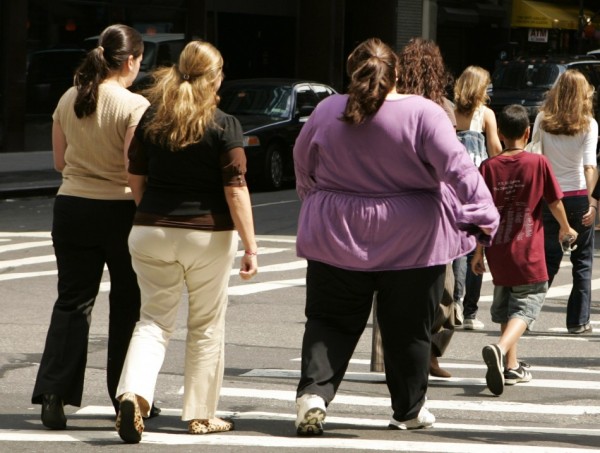What’s Driving the Epidemic?
Obesity is a truly worrisome problem the United States and the world are facing today. It is estimated that overall obesity will be the number one killer ahead of tobacco in the United States. The reason why obesity is a concern is because of its link to other ailments that can prove fatal.
In particular obesity and is associated with high blood pressure, type II diabetes, cardiovascular disease, varous types of cancers i.e. colorectal cancer, osteoarthritis, liver disease, sleep apnea, depression and other medical conditions that affect mortality and morbidity.
It is a known risk factor for hypertension. In fact an increasing number of people are developing high blood pressure because of obesity in their childhood years. Combined with blood pressure obesity can be a lethal sentence for heart disease.
In addition it is known as major contributing factor for type II diabetes that has become the seventh leading cause of death in the United States.
Heart disease and hypertension are life threatening conditions that are directly associated with obesity.
According to a study in The Journal of the American Medical Association (JAMA), in 2008, the obesity rate among adult Americans was estimated at 32.2% for men and 35.5% for women; these rates were roughly confirmed by the CDC again for 2009–2010.
Obesity Research
Studies have noted that 60 percent of overweight five-to-ten year-old children had at least one additional risk factor for cardiovascular disease. Apart from disease, overweight children are also at heightened risk for lower self-esteem, depression, self-blame and social rejection by both peers and adults.
Studies note that in the United States in the last 25 years, the prevalence of children and adolescents who are overweight has tripled to reach 17.1% between the years 2003 and 2004.
It is further discovered in research that the obesity epidemic is taking a hold of both girls and boys regardless of which state they are in, their racial and ethnic background and their socioeconomic status. However it has been observed that subgroups including Hispanics, African Americans and Native Americans are disproportionately affected.
- Obesity has also been shown to increase the prevalence of complications during pregnancy and childbirth.
- Babies born to obese women are almost three times as likely to die within one month of birth and almost twice as likely to be stillborn than babies born to women of normal weight
There are particular environments that influence the choices that children make regarding food and physical activity.
- Child-safety seats in 2006 became modified for the 250,000 obese U.S. children ages six and below.
- The obese incur extra costs for themselves and airlines when flying.
- Obesity has been cited as a contributing factor to approximately 100,000–400,000 deaths in the United States per year
- Increased health care use and expenditures costing society an estimated $117 billion in direct and costs.
- The number exceeds health-care costs associated with smoking or problem drinking and accounts for 6% to 12% of national health care expenditures in the United States
Direct health care costs include:
- preventive,
- diagnostic,
- and treatment services related to excess weight
Indirect health care costs include:
- absenteeism,
- loss of future earnings due to premature death.
These environments are namely home, work, school and clinical environments. It looks clear that if no interventions that are effective and targeted are taken, this will turn out to be a massive health problem going forward into the future as many adults will emerge with all types of diseases.
The opportunity to halt the this trends remains at key points in the life and interaction of kids. Of particular note are the foods that kids are fed at the cited environments above.
Obesity has been cited as a contributing factor to approximately 100,000–400,000 deaths in the United States per year.
Anti-obesity efforts
By 2013, there is evidence that some Americans have addressed the concern about obesity.
This was done voluntarily, through dieting, and through legal means, by bans on junk food in schools.
There was a decrease in obesity rates. However, there was a significant increase in Americans who have slipped into the “extremely obese” category. The extremely obese category includes individuals who are roughly 100 pounds (45 kg) over a healthy weight
Health eating and regular activity will need to be inculcated at an early stage namely at school and at home.
- Teachers and parents alike have a duty to ensure a healthy eating lifestyle in these kids.
- Apparently children spend much of their childhood times at school and at home.
Programs in schools perhaps even sponsored and managed by the federal governments are necessary and involving experts in healthy eating initiatives.
Editors Verdict
Obesity is complex, and weight control is controversial.
- Are people fat because of their genes, hormones, metabolism, or habits?
- Can you shed pounds with a low-carb, high-protein, high-fat diet, or with a low-fat, moderate-protein, high-carb diet?
- Is high-intensity aerobic exercise better than moderate exercise, or is strength training the best of all?
Medical research is littered with conflicting answers, and the controversies are sure to continue. If these questions appear difficult, even unanswerable, it’s because they are the wrong questions.
In the final analysis, weight gain is a matter of simple but unforgiving arithmetic: if you take in more calories than you burn, you’ll gain weight — but if you burn more than you take in, you’ll reduce.
- To control your weight, take in fewer calories.
- To control your weight, exercise more.
- To control your weight, buck the national trend by making wise lifestyle choices.
It’s a real challenge in 21st-century America, but you’ll find it easier if you choose fruits, vegetables, whole grains, low-fat or nonfat dairy products, and fish instead of sugary drinks, red meat, processed foods, and whole-fat dairy products.
Also, 30 minutes of brisk walking nearly every day is a fine start, but for weighty problems, double the amount of moderate exercise or add intense exercise and weight training as your health permits..
With that said, it’s your health and after all the choice is yours.





